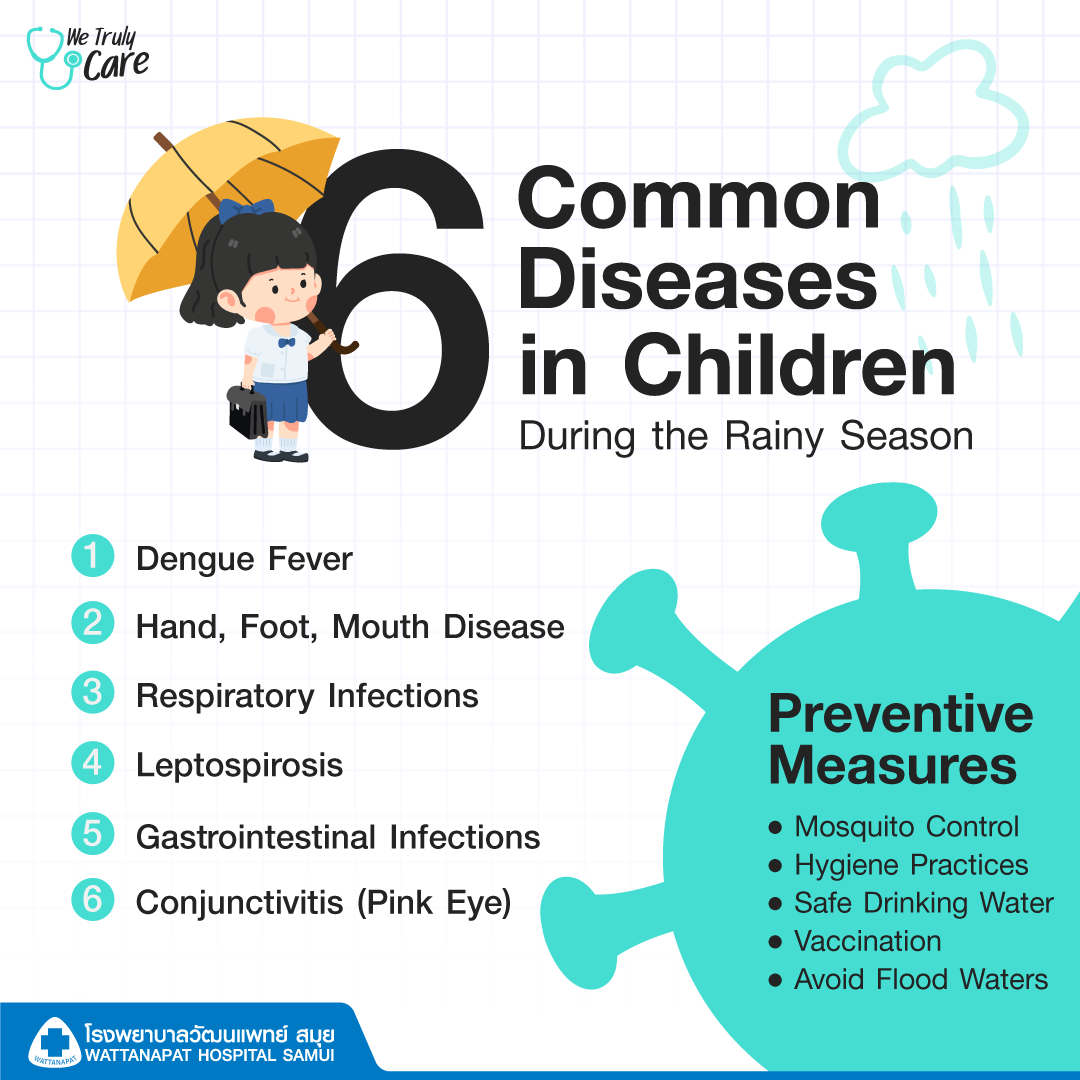Common Diseases in Children During the Rainy Season in Thailand
Common Diseases in Children During the Rainy Season in Thailand
The rainy season in Thailand, typically spanning from May to October, brings with it a heightened risk of various infectious diseases, especially among children. The increased humidity and standing water create ideal conditions for the proliferation of pathogens. Here are some of the most common diseases that affect children during this period:

1. Dengue Fever
Dengue fever is a mosquito-borne viral infection prevalent during the rainy season due to the increased breeding of Aedes mosquitoes in stagnant water. Children are particularly vulnerable to this disease, which can cause high fever, severe headache, pain behind the eyes, joint and muscle pain, and rash. In severe cases, dengue can lead to dengue hemorrhagic fever or dengue shock syndrome, which are life-threatening and require immediate medical attention.
2. Hand, Foot, and Mouth Disease (HFMD)
HFMD is a highly contagious viral illness that commonly affects infants and children. The disease is spread through direct contact with the mucus, saliva, or feces of an infected person. Symptoms include fever, sores in the mouth, and a rash on the hands and feet. The rainy season facilitates the spread of HFMD due to increased close contact in crowded settings such as schools and daycare centers.
3. Respiratory Infections
Respiratory infections, including the common cold, influenza, and pneumonia, are more prevalent during the rainy season. The wet and humid environment supports the survival and transmission of respiratory viruses and bacteria. Symptoms can range from mild, such as a runny nose and cough, to severe, like high fever, difficulty breathing, and chest pain.
4. Leptospirosis
Leptospirosis is a bacterial infection that occurs through contact with water or soil contaminated by the urine of infected animals. Flooding during the rainy season increases the risk of this disease, which can cause high fever, headache, chills, muscle aches, vomiting, jaundice, red eyes, abdominal pain, diarrhea, and rash. If left untreated, leptospirosis can lead to kidney damage, meningitis, liver failure, and respiratory distress.
5. Gastrointestinal Infections
The rainy season also sees a rise in gastrointestinal infections such as diarrhea, cholera, and typhoid fever. These diseases are often caused by consuming contaminated food and water. Symptoms include diarrhea, vomiting, abdominal cramps, fever, and dehydration. Children are particularly susceptible due to their developing immune systems.
6. Conjunctivitis (Pink Eye)
Conjunctivitis, or pink eye, is an inflammation of the conjunctiva often caused by viral or bacterial infections. The increased humidity and frequent rains create favorable conditions for the spread of conjunctivitis, especially in crowded living conditions. Symptoms include redness, itching, and discharge from the eyes.
Preventive Measures
Preventing these diseases involves a combination of public health measures and personal precautions:
1. Mosquito Control: Use insect repellent, install screens on windows and doors, and eliminate standing water around the home.
2. Hygiene Practices: Encourage regular handwashing with soap and water, especially before eating and after using the toilet.
3. Safe Drinking Water: Ensure access to clean drinking water by boiling or treating water before consumption.
4. Vaccination: Stay up-to-date with recommended vaccinations, including those for influenza and typhoid.
5. Avoid Flood Waters: Keep children away from floodwaters to prevent exposure to leptospirosis and other waterborne diseases.
By understanding these common diseases and taking appropriate preventive measures, the risk of illness during the rainy season can be significantly reduced, ensuring better health outcomes for children in Thailand.
For more detailed information, you can refer to resources from: Centers for Disease Control and Prevention (CDC) และ National Center for Biotechnology Information (NCBI). (NCBI) (CDC)


